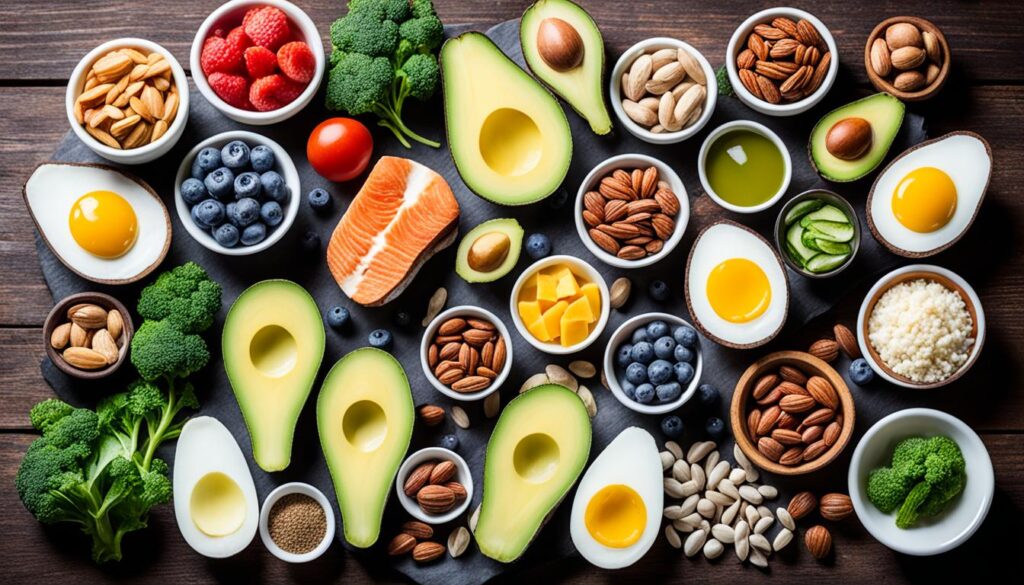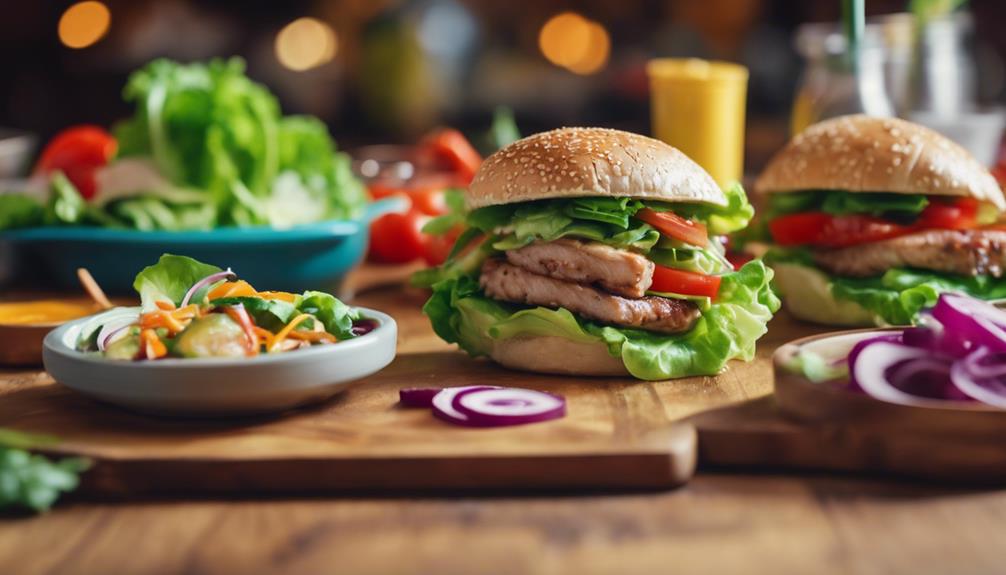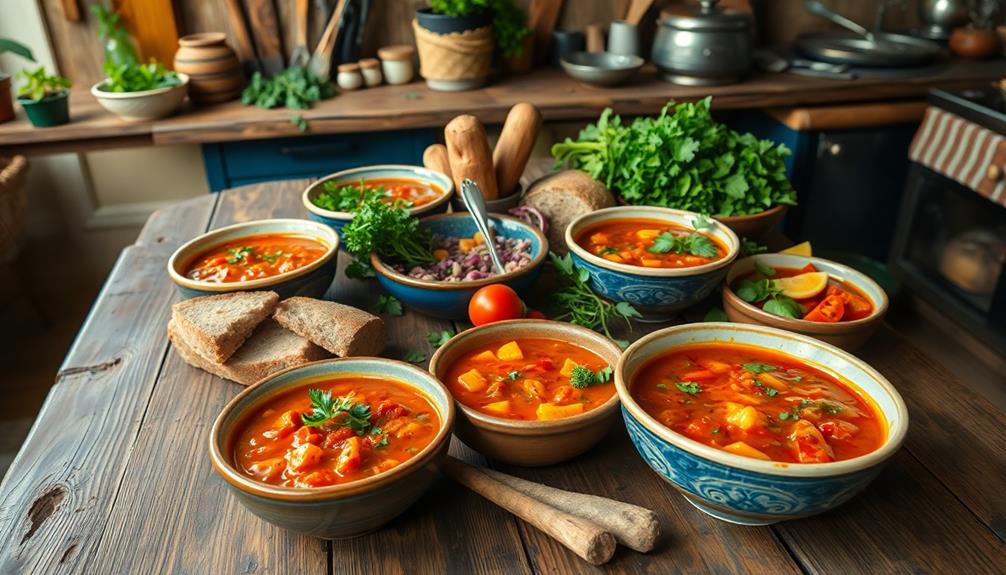Imagine yourself standing at the starting line, heart racing with excitement and a touch of nervousness. Consider this the commencement of a path towards a better version of yourself. The ketogenic diet encourages you to embrace a low-carb lifestyle that offers significant health improvements. If you’ve been experiencing fatigue, unhappiness with your weight, or difficulty concentrating, know that you’re not alone. Many individuals seek ways to boost their energy levels and mental clarity. Embarking on a keto diet is not just about altering your food choices; it’s a vital stride towards enhanced well-being and taking charge of your health.
The ketogenic diet is not just a short-term trend, but a comprehensive way to eat. It changes your metabolism so your body burns fat for energy instead of carbs. This change can help you lose weight, think more clearly, and improve your health. The keto lifestyle means forming new habits, eating fewer carbs, and finding a diet that meets your health needs. This guide will help you understand the keto diet, its benefits, and how to follow it effectively.
Key Takeaways
- The ketogenic diet consists of approximately 70% fat, 20% protein, and only 10% carbs.
- Studies suggest keto followers may lose an average of 2 pounds more than those on low-fat diets.
- People with type 2 diabetes on the keto diet have shown improved blood sugar management and lost significant weight.
- The ketogenic diet may also provide benefits for certain medical conditions, including Alzheimer’s and some cancers.
- It’s essential to plan your meals carefully to mitigate potential side effects related to nutrient deficiencies.
What is the Ketogenic Diet?
The ketogenic diet, often known as keto, cuts carbs a lot and boosts healthy fats. It pushes your body into a state called ketosis, where fat becomes the main energy source. Ketosis explained brings several health boons. These include weight loss and better health. Started in the 1920s for epilepsy in kids, its benefits for obesity and diabetes have made it popular again.
Understanding the Concept of Ketosis
To enter ketosis, your daily carbs must be under 50 grams. Then, your liver turns fatty acids into ketones, an alternative for energy. Being in ketosis leads to:
- Effective weight loss
- Reduced appetite
- Increased levels of HDL cholesterol
- Lowered blood sugar and inflammation
Studies show ketosis helps with diabetes, metabolic issues, and some brain diseases. Diseases like Alzheimer’s and Parkinson’s may improve under this regimen.
The Difference Between Keto and Other Diets
In keto versus other diets, the mix of macros is key. Keto generally has about 75% fat, 20% protein, and 5% carbs. This is different from low-carb or Atkins diets, which allow more carbs and don’t stress fat as much. Keto’s focus on fats gives it unique health benefits.
| Diet Type | Primary Focus | Carb Intake |
|---|---|---|
| Keto | High Fat | Below 50g/day |
| Atkins | Low Carb | Varies on phases |
| Low-Carb | Balanced Macronutrients | Higher than keto |
This diet changes how your body uses fat. It also boosts brain function and energy. Thus, it’s a great choice for those wanting to improve health through diet.
Benefits of Starting a Keto Diet
The ketogenic diet comes with many benefits, especially for those looking for weight loss and better health. People switching to this diet, which is low in carbs and high in fat, see big changes in their body and well-being.
Weight Loss and Fat Metabolism
The keto diet is popular for its quick weight loss results. It has a special mix of nutrients: 55% to 60% fat, 30% to 35% protein, and 5% to 10% carbs. This mix makes the body burn fat instead of carbs. Studies show that people on keto lose fat fast and manage their weight better than on other diets.
Improved Energy Levels and Mental Clarity
Folks on keto often feel more focused and clear-headed thanks to improved energy with keto. The brain uses ketones well, leading to steady energy all day. This switch to burning fat for energy helps with both physical energy and mental sharpness. It makes people feel good overall.
Health Benefits for Diabetes and Heart Health
The keto diet is good for those with diabetes and heart issues. It has been shown to make insulin work better and control blood sugar, which helps with type 2 diabetes. It also may lower heart disease risks by reducing blood pressure and fixing cholesterol levels. With benefits like these, the keto diet is attractive for improving health.

| Benefit | Description |
|---|---|
| Weight Loss | Effective fat metabolism encouraging quick fat loss. |
| Energy Levels | Increased energy and mental clarity from using ketones. |
| Diabetes Management | Improved insulin sensitivity and blood sugar regulation. |
| Heart Health | Potential reduction in blood pressure and improved cholesterol balance. |
Ketogenic Diet Introduction: How It Works
The ketogenic diet is more than a trend. It’s based on science, aiming to change how our body gets energy. Instead of carbs, it uses fats. This big change can help you burn fat and enjoy several health benefits.
Understanding the ketogenic diet helps you make smart choices on your dietary journey.
The Role of Carbohydrates and Fats
Normally, our bodies use carbs for energy. On the keto diet, we cut carbs significantly. This makes our body use fat for energy instead. It’s a process called ketosis.
During ketosis, the liver turns fats into ketones. Our brain uses these ketones for fuel. This can lead to weight loss and might even make you feel sharper and healthier.
Entering Ketosis: A Guide
To get into ketosis, you need to eat fewer carbs, around 20-50 grams per day. Adding fasting or more exercise can help. You’ll notice symptoms like feeling thirstier and a change in appetite.
This method is great for losing weight. It can also make your body use insulin better and help you control hunger.

What Foods Can You Eat on a Keto Diet?
Starting a ketogenic diet means knowing what to eat and how to balance your meals. It’s important to pick from a variety of foods that fit the keto rules. It’s also key to eat lots of healthy fats. This helps you stay in ketosis, where your body uses fat for energy. Here’s what you should eat every day.
Allowed Foods and Healthy Fats
On a keto diet, you should focus on these foods:
- Eggs – A versatile source of protein and healthy fats.
- Poultry – Chicken and turkey provide lean protein.
- Fatty fish – Salmon and mackerel are rich in omega-3 fatty acids.
- Red meat – Beef and lamb offer protein and saturated fats.
- Full-fat dairy – Products like cheese, yogurt, and cream support fat intake.
- Nuts and seeds – Almonds, chia seeds, and others are great for snacking.
- Oils – Olive oil, coconut oil, and avocado oil are excellent for cooking.
- Avocados – Packed with healthy fats and fiber.
- Non-starchy vegetables – Spinach, broccoli, and zucchini are low in carbs.
- Condiments – Use mustard, mayonnaise, and herbs to spice up meals.

Different Food Groups to Include
For a balanced keto diet, aim for these macronutrient ratios:
| Macronutrient | Percentage |
|---|---|
| Fats | 70-75% |
| Protein | 15-20% |
| Carbohydrates | 5-10% |
Try to eat less than 50 grams of carbs each day. Choosing the right foods will help you stay on target. Plan your meals with these nutrients in mind. This will keep you in ketosis while you enjoy tasty and varied dishes. Find a balance that works for you and makes the keto diet beneficial.
Foods to Avoid on a Ketogenic Diet
When you’re on a ketogenic diet, choosing the right foods is vital. Foods high in carbs can stop ketosis in its tracks. Here’s a list of high-carb foods to avoid, including those with hidden sugars that can set you back.
High-Carb Foods to Eliminate
For keto success, cutting out high-carb foods is key. Here are the types of foods to steer clear of:
| Food Category | Foods to Avoid |
|---|---|
| Grains | Pumpernickel, oatmeal, white flour, corn tortillas, wheat, rye, sourdough, oats, corn, buckwheat, sandwich wraps, quinoa, sorghum, barley, rice |
| Fruits | Tangerines, oranges, pineapples, bananas, apples, pears, grapes, fruit juices, mangos, nectarines, peaches, dried fruits (raisins, dates, dried mango), fruit smoothies |
| Starchy Vegetables | Potatoes, sweet potatoes, baked potatoes, yams, peas, corn, artichoke, parsnips, cassava (yuca) |
| Dairy Products | Most milks, condensed milk, creamed cottage cheese, fat-free or low-fat yogurt |
| Legumes | Baked beans, chickpeas, lima beans, pinto beans, black beans, black-eyed peas, lentils, green peas, kidney beans, cannellini beans, great northern beans, navy beans |
| Protein Sources | Bacon with added sugar, breaded meats, processed meats with hidden carbs |
| Beverages | Colas, hot chocolate, ginger ale, grape soda, root beer, tonic water, energy drinks, sports drinks, vitamin water, fruit juices, lemonade, sweetened iced tea, frappuccino, mocha, non-light beers, cocktails (margaritas, screwdrivers, piña coladas) |
Common Foods that Contain Hidden Sugars
It’s important to read labels to spot hidden sugars. Many products have added sugars that can mess with your keto diet. Be careful with:
- Condiments like ketchup and barbecue sauce
- Processed snacks such as granola bars and trail mix
- Low-fat products that often add sugar to enhance flavor
- Packaged salad dressings
- Store-bought baked goods
Choosing keto-friendly alternatives over high-carb and sugary foods helps with your diet. Always choose whole foods to stay true to keto principles.

Types of Ketogenic Diets
Knowing the different ketogenic diets is key for your health journey. Each type fits different goals, preferences, and ways of living. If you’re looking at the standard ketogenic diet or exploring cyclical and targeted keto, understanding these choices is crucial.
Standard Ketogenic Diet (SKD)
The standard ketogenic diet is well-studied and often suggested. It focuses on high-fat, moderate-protein, and low-carb foods. People usually aim for 75% fats, 20% protein, and 5% carbohydrates in their diet. This helps your body start ketosis, burning fat for energy instead of carbs.
Cyclical and Targeted Ketogenic Diets
Cyclical targeted keto gives you more freedom. It’s great for those needing more energy or wanting to gain muscle. It mixes standard keto diet days with days where you eat more carbs. Let’s look at both kinds:
| Type of Diet | Overview | Ideal For |
|---|---|---|
| Standard Ketogenic Diet (SKD) | Consistent high-fat, moderate-protein, low-carb intake to maintain ketosis. | Weight loss, managing blood sugar, and general health improvements. |
| Cyclical Ketogenic Diet (CKD) | Alternates between the standard keto and higher-carb days, usually 5:2 format. | Those with high energy needs or athletes looking to enhance performance. |
| Targeted Ketogenic Diet (TKD) | Involves eating extra carbs around workouts to fuel performance while maintaining ketosis. | Active individuals who perform high-intensity workouts. |
Choosing the right ketogenic diet depends on your goals and lifestyle. Knowing how these diets work helps you pick the best one for your health dreams.

How to Get Started with Keto
To start your keto journey right, planning and knowing your goals is key. Begin with two main steps: meal planning and setting achievable goals. These steps will help you ease into the keto lifestyle smoothly.
Creating a Meal Plan
Planning your meals is vital to stay on track. First, pick foods you like that fit keto guidelines. You should aim for a diet that is roughly 70-75% fat, 20-25% protein, and up to 5% carbs. This helps keep your daily carbs under 50 grams.
- Breakfast: Eggs cooked in butter with avocado.
- Lunch: Salad with leafy greens, grilled chicken, and olive oil dressing.
- Dinner: Steak with steamed broccoli and melted cheese.
- Snacks: Nuts, cheese, and guacamole.
By planning ahead, you can enjoy tasty meals and stick to your keto goals. Use food lists to help pick the right items.
Setting Realistic Goals
Setting achievable keto goals boosts your motivation. Start with short-term goals, like losing a few pounds in a month or bettering your blood sugar. Most people see weight loss in the first three to six months of keto. Aim for slow, steady change to avoid getting upset.
For the long haul, aim for a healthy weight, better energy, or managing health issues. Keep track of your goals to see your progress. Celebrating little wins keeps you motivated and focused.

| Type of Goal | Timeline | Example |
|---|---|---|
| Short-term | 1 Month | Lose 5 pounds |
| Medium-term | 3 Months | Improve blood sugar control |
| Long-term | 6-12 Months | Reach ideal weight |
Stay committed, patient, and flexible as you start keto. Keep meals interesting and set realizable goals to enjoy your journey.
Potential Challenges and the Keto Flu
Starting a ketogenic diet brings challenges, like the keto flu. Your body changes from using carbs to ketones for energy. This can cause symptoms. Knowing about these symptoms helps you handle the change better.
What to Expect During the Transition
The symptoms of keto flu appear when you begin the keto diet. They include:
- Headaches
- Fatigue
- Irritability
- Nausea
- Dizziness
- Muscle cramps
These symptoms show when your body misses carbs. They’re tough but mostly short-lived. They last a few days to weeks. For a few, it could take a month. Knowing these signs helps in dealing with keto’s challenges.
How to Ease Symptoms of Keto Flu
Here are ways to lessen keto flu discomfort:
- Stay Hydrated: Drink a lot of water to lessen headaches and fatigue.
- Increase Electrolyte Intake: Eat foods high in potassium, magnesium, and sodium. This helps during the diet change.
- Gradually Reduce Carbohydrates: Lower your carb intake slowly. This gives your body time to adapt.
- Rest and Sleep Well: Good sleep and rest help your body recover.
- Consume Healthy Fats: Eat enough healthy fats. They are crucial for the keto diet.
Using these strategies makes dealing with symptoms of keto flu easier. It helps in smoothly moving to the ketogenic lifestyle.

Monitoring Your Progress on Keto
Tracking your progress on the ketogenic diet is key to knowing if it’s working for you. There are different ways to test for ketosis, using blood, urine, or breath tests. These tests show if you are in ketosis, which is vital for meeting your diet goals. You should also watch for symptoms of the keto diet, which show how well your body is adjusting.
Using Tests and Symptoms to Gauge Ketosis
To monitor your keto diet success, combine testing with noticing your body’s reactions. Consider these methods:
- Blood Testing: This checks ß-hydroxybutyrate levels. You should aim for 1.5 to 3.0 mmol/L for the best ketosis state.
- Urine Testing: This measures acetoacetate. A darker test strip means higher ketone levels.
- Breath Testing: This looks at acetone in your breath. More acetone means more ketones.
Being mindful of keto diet symptoms can also guide you. Here are common symptoms to watch for:
- Increased energy levels from burning fat.
- Less hunger and more fullness from eating healthy fats.
- Improved mental clarity and focus.
Planning your meals is crucial for keeping on track. Make sure your meals follow the 70% fat, 20% protein, and 10% carbs ratio. Watch out for hidden carbs in sauces and dressings which can affect your carb count.

Regular ketone testing and listening to your body can enhance your keto journey. With commitment and awareness, you’ll be able to stay on top of your ketogenic diet and see great results.
Tips for Meal Preparation and Planning
Meal prep is key for a great keto lifestyle. Planning meals and shopping can make a big difference. It helps you use fresh ingredients that meet your diet goals.
Grocery Shopping for Keto-Friendly Foods
At the store, choose keto-friendly items. Here’s what to remember:
- Choose fresh meats: Lean fish and poultry are good. Grass-fed beef is also a top choice.
- Load up on low-carb vegetables: Spinach, broccoli, and cauliflower are among the best.
- Select healthy fats: Use avocado oil, olive oil, and nuts for cooking or snacks.
- Avoid high-carb foods: Skip bread, pasta, and sugary treats to keep your keto plan on track.
Sample Meal Plans for Your First Week
Starting keto can feel overwhelming, but a solid plan helps. Here’s a meal plan for the first week:
| Day | Breakfast | Lunch | Dinner | Snacks |
|---|---|---|---|---|
| Monday | Scrambled eggs with spinach | Salad with grilled chicken and olive oil | Salmon with asparagus | Almonds |
| Tuesday | Avocado toast on low-carb bread | Turkey lettuce wraps | Zucchini noodles with pesto | Cheese slices |
| Wednesday | Chia seed pudding | Tuna salad in avocado | Beef stir-fry with broccoli | Pork rinds |
| Thursday | Bacon and eggs | Cauliflower rice bowl | Roasted chicken with Brussels sprouts | Pumpkin seeds |
| Friday | Greek yogurt with nuts | Egg salad lettuce wraps | Grilled shrimp with zucchini | Berries (small portion) |
| Saturday | Protein shake | Spinach and feta stuffed chicken | Steak with sautéed mushrooms | Celery with almond butter |
| Sunday | Breakfast casserole | Caprese salad with avocado | Lamb chops with green beans | Hard-boiled eggs |
Plan your grocery trips and meals for a smooth switch to keto. You’ll enjoy tasty food while sticking to your goals. Happy cooking!

Conclusion
The ketogenic diet has many benefits, attracting people who want to better their health. It aids in weight loss and boosts energy levels. This surge in interest is shown by Google Trends data on starting keto.
By using the key tips from this article, you can follow the keto diet well. This will lead you to a healthier way of living.
Knowing about the keto diet overview helps you choose the right foods. This leads to better weight control and blood sugar levels. As you start this journey, remember to stay consistent for success. Planning your meals and being willing to tweak them will ensure a keto lifestyle you can enjoy for a long time.
Switching to keto might change your body and boost your mind. Success comes from not just dieting. It’s about improving your whole health along with the benefits of the ketogenic diet.










